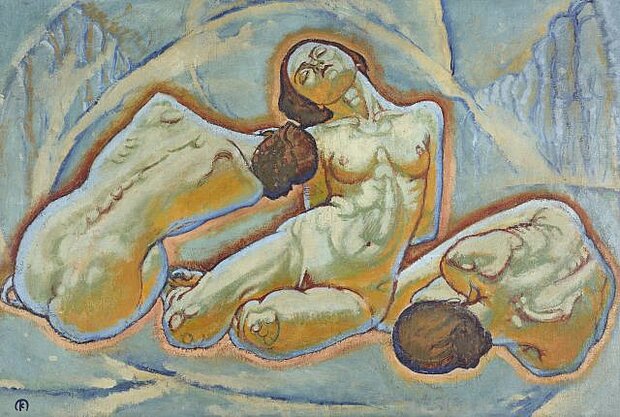
Moser, Kolo
Drei Frauen
Three Women
1914

© mumok
Three naked women are huddling closely together, leaning to one side, kneeling or lying in an undefined space. Two of them are painted from behind, and the three together form a unified composition. Their arms are not shown and it looks like they might be tied up. They all have similar bodies and the same hair tied close to their necks. Perhaps this is the same woman in three different poses, studies of one subject that have been compiled to create a whole. Their bodies are outlined with a kind glowing light, and the artist has also painted long shadows and used greenish-blue reflections on the women’s skin. Their eyes are closed as if in rapture, and these three women seem to be floating magically in an idealized flood of color. “Three Women” was painted around 1914, at a time when the artist Koloman Moser had begun to work intensively on some of the basic questions of painting—the representation of light and color. He used Johann Wolfgang von Goethe’s theory of color, drew countless sketches and studies, and made copious notes. He wrote: “Every color tone in a picture must consist of the three primary colors yellow, blue, and red. [. . .] If two color surfaces come up against each other, then their margins change as if the complementary color of the other margin had been added.” Alongside his work as a painter, which was influenced by his friend the Swiss painter Ferdinand Hodler, Koloman Moser also worked as a graphic artist and artisan. He was a founder member of the Vienna Secession and in 1903 he and Josef Hoffmann founded the Vienna Workshops. All of his artistic work is influenced by art nouveau, and the mystical idealization of women and the female body typical of art nouveau can be seen in this painting.
© mumok – museum moderner kunst stiftung ludwig wien